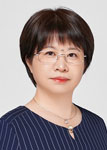ACS Sustainable Chemistry & Engineering ( IF7.1 ) https://doi.org/10.1021/acssuschemeng.1c05184
Teng Yang, Yingshuang Xu, Honghao Lv, Min Wang, Xuejing Cui, Guangbo Liu,* and Luhua Jiang*
Nanomaterial & Electrocatalysis Laboratory, College of Materials Science and Engineering, Qingdao University of Science and Technology, Qingdao 266042, P. R. China
*Email: luhuajiang@qust.edu.cn; liugb@qust.edu.cn
KEYWORDS: Molybdenum oxides; phase engineering; intrinsic activity; hydrogen evolution reaction; Mg/seawater battery
ABSTRACT: Molybdenum oxides have been considered as promising non-noble metal electrocatalysts for hydrogen evolution reaction (HER) due to their low-cost, nontoxic and chemically stable characteristics. However, promoting the intrinsic catalytic activity of molybdenum oxides is crucial for achieving high HER performance. In this work, we demonstrate that the intrinsic HER activity of Ni-doped molybdenum oxides is triggered via a thermal treatment induced phase-engineering strategy. The HER overpotential at 10 mA cm-2 decreases from 493 mV (1M KOH) and 818 mV (seawater) over Ni-doped molybdenum trioxide (Ni-MoO3) to only 234 mV and 412 mV over Ni-doped molybdenum dioxide (Ni-MoO2), respectively. Moreover, the electrochemical surface areas (ECSAs)-normalizedcurrent density over Ni-MoO2, as compared to Ni-MoO3, is at least 35-fold increase in alkaline (at -0.2 V vs. RHE) and 59-fold increase in seawater (at -0.4 V vs. RHE), confirming the significantly triggered intrinsic HER activity via engineering orthorhombic MoO3 to monoclinic MoO2. Finally, an Mg/seawater battery was fabricated with the Ni-MoO2 cathode, which displays a peak power density of 6.54 mW cm-2 and a continuous stable discharge for over 12 h. This work provides a facile strategy for promoting the intrinsic HER activity of non-noble metal electrocatalysts.


